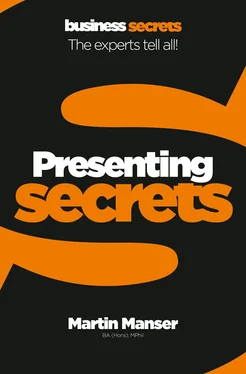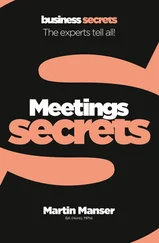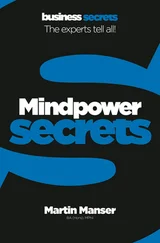Martin Manser - Presenting
Здесь есть возможность читать онлайн «Martin Manser - Presenting» — ознакомительный отрывок электронной книги совершенно бесплатно, а после прочтения отрывка купить полную версию. В некоторых случаях можно слушать аудио, скачать через торрент в формате fb2 и присутствует краткое содержание. Жанр: unrecognised, на английском языке. Описание произведения, (предисловие) а так же отзывы посетителей доступны на портале библиотеки ЛибКат.
- Название:Presenting
- Автор:
- Жанр:
- Год:неизвестен
- ISBN:нет данных
- Рейтинг книги:3 / 5. Голосов: 1
-
Избранное:Добавить в избранное
- Отзывы:
-
Ваша оценка:
- 60
- 1
- 2
- 3
- 4
- 5
Presenting: краткое содержание, описание и аннотация
Предлагаем к чтению аннотацию, описание, краткое содержание или предисловие (зависит от того, что написал сам автор книги «Presenting»). Если вы не нашли необходимую информацию о книге — напишите в комментариях, мы постараемся отыскать её.
Presenting — читать онлайн ознакомительный отрывок
Ниже представлен текст книги, разбитый по страницам. Система сохранения места последней прочитанной страницы, позволяет с удобством читать онлайн бесплатно книгу «Presenting», без необходимости каждый раз заново искать на чём Вы остановились. Поставьте закладку, и сможете в любой момент перейти на страницу, на которой закончили чтение.
Интервал:
Закладка:
Whether you are an experienced presenter or a first-timer, you can make a positive impact on your audience and, just as importantly, enjoy doing so!
Prepare the basics
The successof your presentation will depend on preparation. This chapter explains the firm foundations you need to lay to make your presentation effective. It covers creative thinking, organizing your thoughts and undertaking research. This is the ‘blank canvas’ stage. You need to work through the ultimate aims of what you are planning to achieve. Think about who is in your audience and the best way to communicate with them.
1.1 Stand out from the crowd
First of all, take a step back from thinking about the content of your presentation and think about your own personality instead. Remember that your audience will be listening to and looking at a presenter as much as a presentation.
You don’t want simply to deliver a series of data and facts. You want to put your soul into this presentation, and enjoy yourself in the process. The most interesting, memorable and effective presentations have the personality of their presenter stamped all over them. You want to put across your values and opinions, and your audience wants to hear them. Here are some tips to help you from the start to develop a really positive, creative view of yourself as an interesting presenter:
• Read something worthy.Devour your favourite website. Read a quality newspaper e.g. The Economist , Time , Newsweek .
• Think. Don’t just read.Think through the big underlying issues. Schedule in time to relax your brain from concentrated action. Carry a pen and notebook with you, or digital equivalents. Jot down your thoughts and ideas – however odd they may be. They may be useful.
“Don’t measure yourself by what you have accomplished, but by what you should have accomplished with your ability”
John Wooden, legendary basketball coach
• Really listen to people.What they’re saying…and not saying. Reflect on what you’re learning. Talk with friends and colleagues. Discuss issues and ideas; express your latest thinking to gauge responses. Develop ideas you feel passionate about.
• Examine your values and principles.What motivates you? Life is full of decisions. What spurs you on?
• Care for others.Don’t become so absorbed with yourself that you neglect people around you, in your community and in the wider world. Take a stand on world issues, and engage in some practical action.
• Stretch yourself.What areas of life that are currently weak do you want to develop? Sketch them out and then begin to work on the next steps to fufil them.
• Don’t take yourself too seriously.Watch TV. Relax – and laugh at yourself.
• Cultivate your spiritual/emotional side.Whether it’s religion or poetry. We’re not just thinking machines.
• Work on the physical side of your life.Take control of your life. If you’re out of condition, go to the gym regularly: if you want to lose weight, join a slimming class.
Cultivate a positive attitude about yourself as a great presenter.
1.2 Know your aims
It’s vital to know why you are giving your presentation. It is important that you define the purpose of what you are presenting in one sentence. This will clarify what you should include – and what you can safely leave out. Having a concise, clearly expressed aim in front of you in all your preparation will help guide your thoughts.
Think why you have been asked to give a presentation. It may even be that a presentation is not the only way (and possibly not even the best way) of communicating a message.
See your presentation as one part of an aspect of the communications of your company or organization. Other ways of giving a message include email, the company intranet, a memo or report, posters, group discussion, one-to-one meetings, managers and bosses
one minute wonderIn preparing a presentation, it can be very helpful to think of one typical person in the audience. Will he or she understand what you are saying and be persuaded by its message? Imagine you are talking to a personal friend.
“If you don’t know where you are going, you will probably end up somewhere else”
Dr Laurence J. Peter and Raymond Hull, authors of The Peter Principle
who model certain behaviour to build trust. Ask the following questions about your presentation:
• Who is in the audience?What are they like? What do they already know about the subject? You can then make sure that what you are saying is suitable for their level.
• What are the main messages?Are you clear about the essential information and ideas you want to communicate?
• What do you want to achieve?This is what you want people to do or think, understand or accept as a result of your presentation. Do you want colleagues to accept future sales forecasts? Or be persuaded to adopt a new product? How will you measure people’s reactions to know whether you have fulfilled your aim?
• How are you going to make your presentation?For example, how formal is it? Will you stand or sit? What visual aids will you use?
• How long will you speak for?Will there be time for questions? What is the room like? How will the audience be seated?
• What’s the big picture?Where does your presentation fit into the overall picture of communications in your organization?
Work out exactly what you want to achieve with your presentation.
1.3 Know your audience
It’s important that the focus of your presentation is your audience. You should do all you can to research your audience so that you can pitch at the right level. Here are eight things to think about.
1 How many people will be at your presentation? The way you give your presentation will vary greatly if the audience is five people, 20, or 200.
2 What does the audience already know about the subject? If you don’t know, ask the organizer. Knowing this will enable you to decide whether to go over the basics and how much you will need to explain jargon.
case studyAdam’s failure was when he presented the keynote speech at a major conference. He knew that the company had paid a lot to secure the keynote slot, and he therefore assumed incorrectly that he had to do a hard sell. In reality, the audience was a group of distinguished analysts, and they were interested in industry trends. They reported later that the company still didn’t understand the enterprise. What Adam should have done was simply inform them of the trends the company sees, and that would have built credibility and even positioned the company as market leader.
3 What are the attitudes or feelings of the audience likely to be towards the subject you are presenting – and to you?
4 What expectations does the audience have of you as the presenter?
5 Do members of the audience know one another? Do they have good relationships with one another?
6 Will members of the audience be present because they have to come to your presentation or because they want to be there?
7 Are there any hidden agendas or underlying tensions that you should be aware of?
8 Who are the decision makers in the audience? What are their opinions?
Find out as much as possible about your audience in advance.
Читать дальшеИнтервал:
Закладка:
Похожие книги на «Presenting»
Представляем Вашему вниманию похожие книги на «Presenting» списком для выбора. Мы отобрали схожую по названию и смыслу литературу в надежде предоставить читателям больше вариантов отыскать новые, интересные, ещё непрочитанные произведения.
Обсуждение, отзывы о книге «Presenting» и просто собственные мнения читателей. Оставьте ваши комментарии, напишите, что Вы думаете о произведении, его смысле или главных героях. Укажите что конкретно понравилось, а что нет, и почему Вы так считаете.












